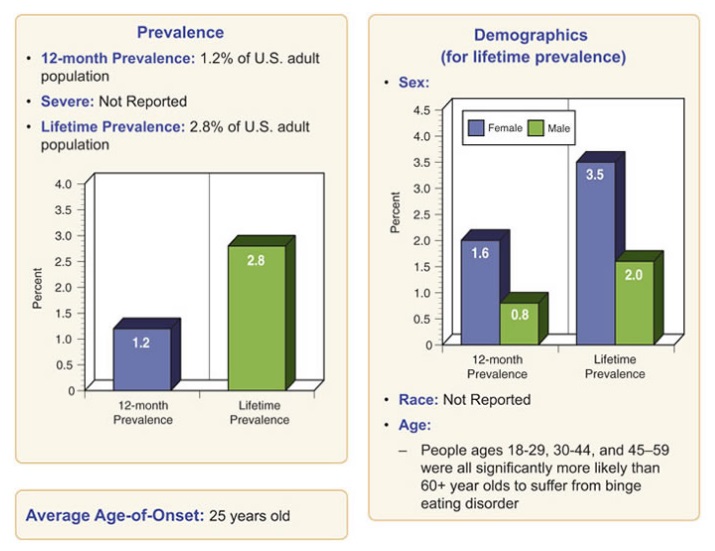Eating Disorders Among Adults - Binge Eating Disorder Statistics
TweetBinge-eating disorder is characterized by recurrent binge-eating episodes during which a person feels a loss of control over his or her eating. Unlike bulimia, binge-eating episodes are not followed by purging, excessive exercise or fasting. As a result, people with binge-eating disorder often are overweight or obese. They also experience guilt, shame and/or distress about the binge-eating, which can lead to more binge-eating.
- 2.8% of American adults suffer from binge eating disorder in their lifetime.
- Approximately half of the risk for BED is genetic.
- Nearly half of BED patients have a comorbid mood disorder.
- More than half of BED patients have comorbid anxiety disorders.
- Nearly 1 in 10 BED patients have a comorbid substance abuse disorder, usually alcohol use.
- Binge eating or loss-of-control eating may be as high as 25% in post-bariatric patients.



Sometimes crying or laughing
are the only options left,
and laughing feels better right now.

Current Issue
 Self Help Leaflets Take the help of our self help leaflets or booklets. |
 The DG Magazine All about living with depression |












